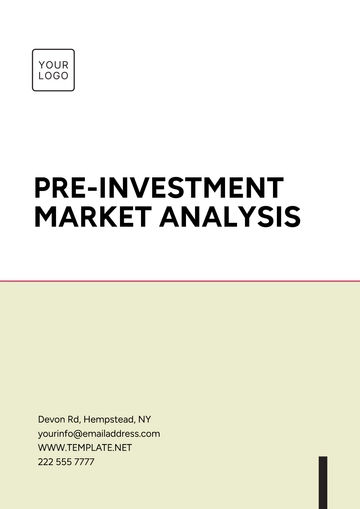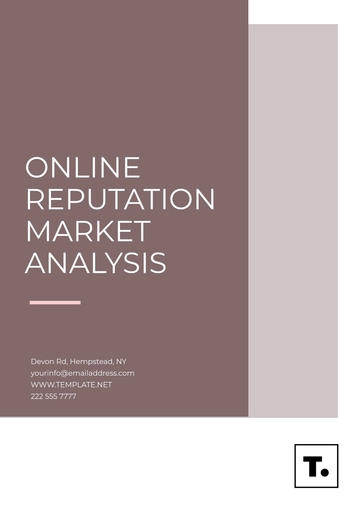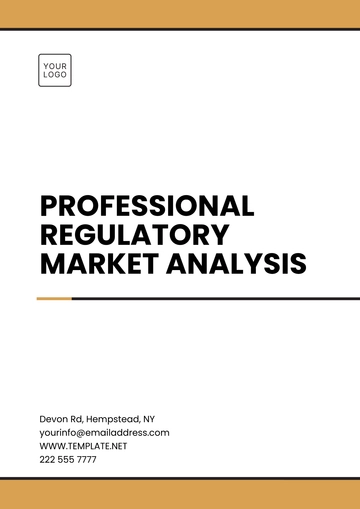Free Economic Analysis for Magazine Article

Author: [Your Name]
Date: [Date]
Introduction
In this article, we will explore the current economic conditions and future trends shaping the global economy. By analyzing key indicators and emerging patterns, we aim to provide insights into how these trends might influence various sectors and the broader economy.

Overview of Current Economic Conditions
Economic Growth: Recent data from the International Monetary Fund (IMF) indicates that global GDP growth is projected to slow down to 2.5% in 2024, down from 3.1% in 2050. This deceleration is attributed to ongoing geopolitical tensions and supply chain disruptions.
Inflation Rates: Inflation rates have shown variability across regions. For instance, the U.S. Consumer Price Index (CPI) has moderated to 4.2% on August 2051, down from a peak of 6.5% in mid-2051. Conversely, inflation in the Eurozone remains high at 5.1%, driven by energy prices and supply constraints.
Unemployment Rates: The global unemployment rate has decreased to 6.0%, with notable improvements in the U.S. (3.8%) and the Eurozone (6.2%). However, some emerging markets continue to face higher unemployment, such as South Africa, where the rate stands at 33.5%.
Key Economic Indicators
Consumer Confidence: The Conference Board's Consumer Confidence Index in the U.S. increased to 112.5 on July 2051, reflecting improved consumer sentiment and optimism about economic recovery. However, consumer confidence in Japan remains subdued at 95.4, influenced by stagnant wage growth and economic uncertainties.
Business Investment: Investment in technology and renewable energy is rising. For example, venture capital funding for clean tech startups reached $12 billion in the first half of 2050, a 25% increase from the previous year. In contrast, traditional sectors like manufacturing have seen reduced investment due to overcapacity and declining demand.
Interest Rates: The Federal Reserve has recently raised the benchmark interest rate to 5.0% to combat inflation, while the European Central Bank (ECB) has kept rates at 3.5%. This divergence in monetary policy affects borrowing costs and economic growth differently across regions.
Sector-Specific Trends
Technology Sector: The technology sector continues to experience rapid growth, with AI and machine learning innovations driving advancements in various fields. Companies like OpenAI and Google are leading developments in generative AI, which is expected to create $200 billion in new market value by 2051. Additionally, the rise of quantum computing promises to revolutionize data processing capabilities.
Healthcare Sector: Healthcare spending is expected to increase by 6% annually over the next five years, driven by aging populations and advancements in biotechnology. The global telemedicine market has surged to $120 billion, with significant growth in remote patient monitoring and virtual consultations.
Retail Sector: E-commerce continues to outpace traditional retail, with online sales accounting for 22% of global retail sales in 2050. Major players like Amazon and Alibaba are expanding their reach in emerging markets, while brick-and-mortar retailers are investing in omnichannel strategies to enhance customer experiences.
Emerging Trends and Future Outlook
Sustainability and Green Economy: The global push towards sustainability is evident, with investments in green energy expected to reach $500 billion annually by 2051. Governments are implementing stricter emissions regulations, and companies are adopting carbon-neutral goals, driving innovation in renewable energy and electric vehicles.
Global Trade Dynamics: Trade tensions between the U.S. and China have led to changes in global supply chains, with companies diversifying sourcing to mitigate risks. The recent signing of the Comprehensive and Progressive Agreement for Trans-Pacific Partnership (CPTPP) is expected to enhance trade relations and economic integration in the Asia-Pacific region.
Digital Transformation: The digital transformation trend is accelerating, with businesses investing in digital tools and platforms to enhance operational efficiency. The rise of blockchain technology and decentralized finance (DeFi) is reshaping financial services, offering new opportunities for innovation and disruption.
Implications for Stakeholders
Investors: Investors should consider diversifying portfolios to include sectors poised for growth, such as technology and renewable energy. Additionally, monitoring geopolitical developments and interest rate changes will be crucial for making informed investment decisions.
Businesses: Companies need to adapt to evolving consumer preferences and technological advancements. Embracing digital transformation and sustainability initiatives can provide a competitive edge and align with shifting market demands.
Policymakers: Policymakers should focus on implementing policies that support economic stability and growth. This includes addressing inflationary pressures, fostering innovation, and promoting sustainable development to ensure long-term economic resilience.
Conclusion
A mix of growth opportunities and challenges marks the current economic landscape. As we look to the future, staying informed about emerging trends and adapting strategies will be essential for navigating the evolving economic environment. By understanding these trends, stakeholders can better position themselves to capitalize on opportunities and mitigate potential risks.
References
Global Economic Outlook Reports - Provided by leading international financial institutions.
Economic Growth and Inflation Data - Sourced from major economic research organizations.
Industry Trends and Sector Analysis - Compiled by prominent global economic forums.
Economic Indicators and Forecasts - Published by well-known economic research agencies.
Interest Rates and Investment Trends - Collected from major financial data providers.
Consumer Confidence and Business Investment Statistics - Provided by national economic and financial analysis agencies.
- 100% Customizable, free editor
- Access 1 Million+ Templates, photo’s & graphics
- Download or share as a template
- Click and replace photos, graphics, text, backgrounds
- Resize, crop, AI write & more
- Access advanced editor
Deliver sharp economic insights with Template.net's Economic Analysis Magazine Article Template. Fully customizable and editable, this template is designed for in-depth analysis and is editable in our AI Editor Tool for seamless personalization to fit your magazine's style.





























